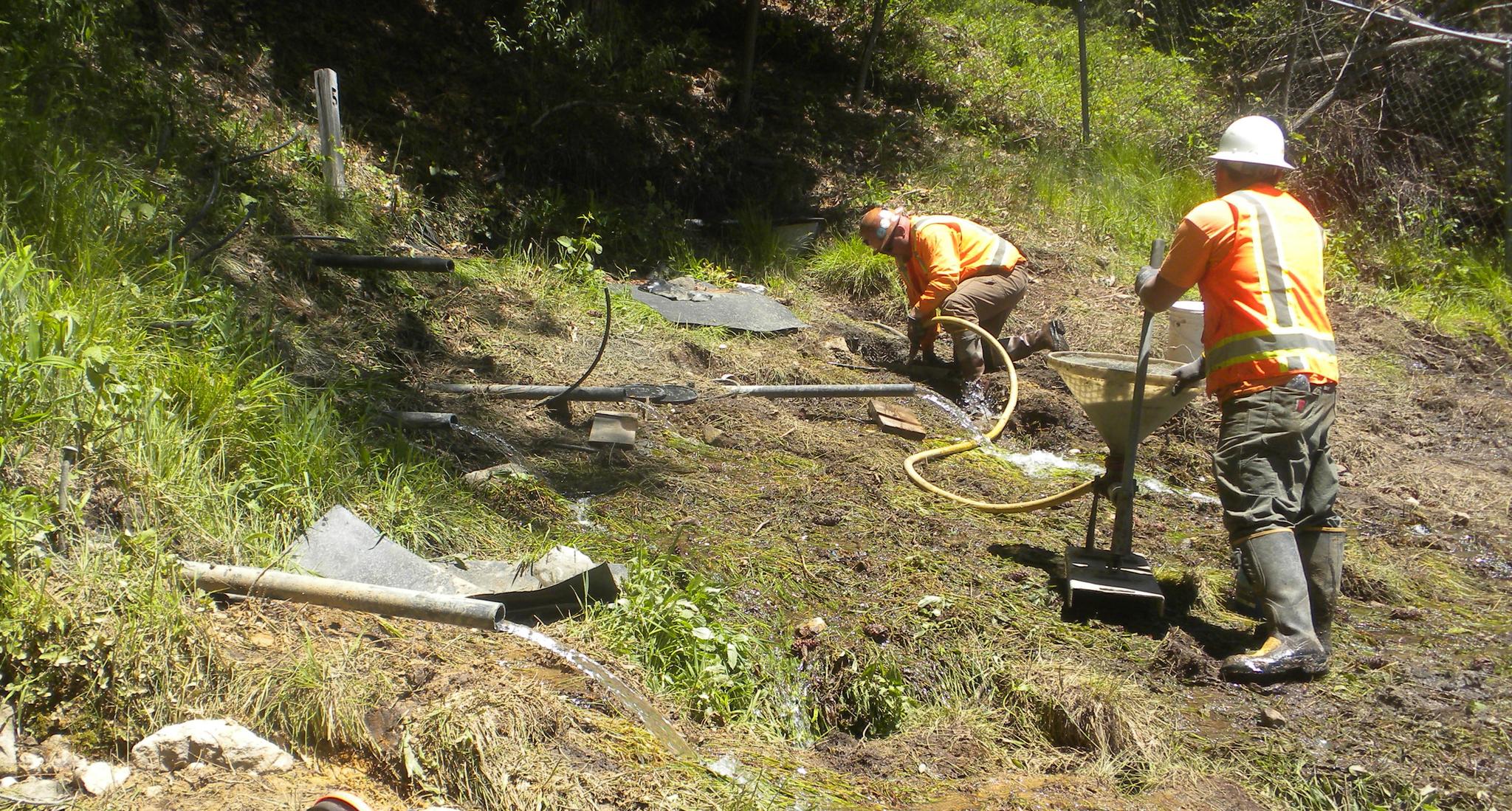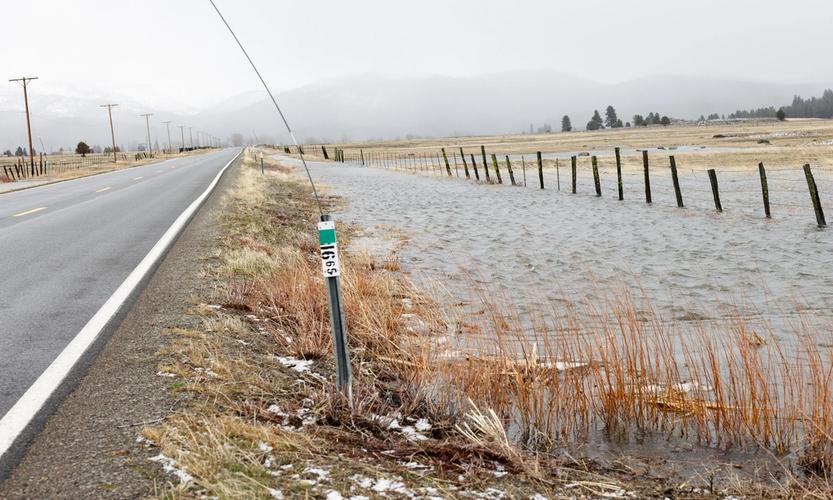Southwest Sierra #61 — The Horizontal Wells
May 28, 2024

May 16, 2017 — Neil’s Control Blasting workers pumping cement to seal a hole
continued from last week… The subject of setting up the spring site to meet State Drinking water standards was barely skimmed last week. The holes that did not produce water had to have special concrete pumped back into them to fill and seal them. Besides the non-producing holes at the lower elevation, as the drilling moved across at the higher elevation, water production diminished. Out of 17 holes that were drilled only 5 were good producers, but six were kept in place. One area that produces water was not accessible to the drilling machine and that cistern remains in place, still collecting water on the surface. Its flow was not impacted by the horizontal drilling, indicating the existence of a separate water channel. However, the flow from that site alone is not adequate to meet the town’s water supply needs.
A plumber was hired to install a manifold connecting all six driven pipes into a single larger pipe that flows into a new 1,100 gallon holding tank. From the holding tank the water enters the pumphouse where it is filtered and chlorinated before being pumped up to the 150,000 holding tank above town. Next began a series of water quality tests to determine if the water could be reclassified as just “ground water” without the “surface water infiltration”. A test called a “Microscopic Particulate Analysis” had to be conducted four times: two dry season tests and two wet season tests. For this test, the water is run through a special filter designed to collect all “particulate matter” for 72 hours. The filter is then sent to a lab for analysis. It took over a year to complete this series of tests. In the meantime, the Memcor Treatment Plant remained in place. The final Microscopic Particulate Analysis test was finished in October of 2018 and on October 20, 2018, the State Division of Drinking Water issued an amendment to ACWD’s drinking water permit, reclassifying the water as “Ground Water”. The date is easy for me to remember because two of my mother’s sisters share that birthday.
This reclassification of the Ram Spring Water eliminated the need for the Memcor Treatment Plant that was installed in 1995. Initially, the plant worked great, but it was a proprietary piece of equipment that required service by Memcor technicians. The closest technician had relocated to Colorado and his fee was quite high for site visits. As the plant aged, the cost of maintaining it kept getting higher and higher. Not only that, but the control panel needed to be replaced with a price tag of $10,000 for the hardware and another $7,000+ for installation.
The environmental work for the planning phase of the Ram Spring Construction project ate up the remainder of the $500,000 planning grant budget. The environmental work was not completed by the time the money ran out. A “Technical Assistance” grant bridged the gap for getting the environmental work 90% done. Two out of three goals expressed in the Planning Grant Application were accomplished: 1. the planning phase for a new water storage tank had been completed and 2. the treatment plant requirement had been removed. The goal of identifying a reliable secondary water source for the town was not met.
Lest anyone think this is a “happily ever after” story, it isn’t. The horizontal wells are not without their own quirks and maintenance needs. In early 2021, water flow from the horizontal wells reduced drastically. I had a hunch that tree roots were the cause of the problem. Our new division of drinking water engineer put us in touch with Jared Recasens the Water Operator for the City of Portola. Portola also relies on underground spring water as its water source. Their collection system doesn’t utilized pipes, but uses channels constructed with concrete blocks. I talked to Jared, and sure enough, they had experienced tree root intrusion in their collection system. They had purchased a motorized snake with blades on the end to cut the roots out. It is now part of their annual maintenance schedule to reem out the channels. ACWD was able to purchase a smaller version of Portola’s “snake” to accommodate the diameter of the horizontal wells. In March of 2021 a large amount of tree roots was removed, and the flow returned.
I won’t bore my readers with the details of why it took over three years to complete the application for a construction grant to reconfigure the infrastructure at the Ram Spring to protect and accommodate the horizontal wells. A funding agreement was finally signed in October of 2023, ten years after I started pursuing the funding. How long will it take to complete the construction phase? Only time will tell.
About the author: Rae Bell (aka Pauline) grew up in the Ruby Mine area. She currently resides in Alleghany proper and can be reached at raebell44@gmail.com or PO Box 919, Alleghany, CA 95910.
Featured Articles

FEMA Unveils Expanded Floodplain Maps for Sierra Valley →
November 4, 2025
FEMA’s new maps could require more Sierra Valley homeowners to purchase flood insurance.
Community Supports UPS Driver Garitt Cox in Board Presentation →
November 4, 2025
Fish & Wildlife Lethally Removes Sierra Valley Problem Wolves →
October 27, 2025
Plumas-Sierra CattleWomen Disband After 60 Years →
October 28, 2025
Exotic Animals Delight Downieville Students at Wild Things Assembly →
October 20, 2025